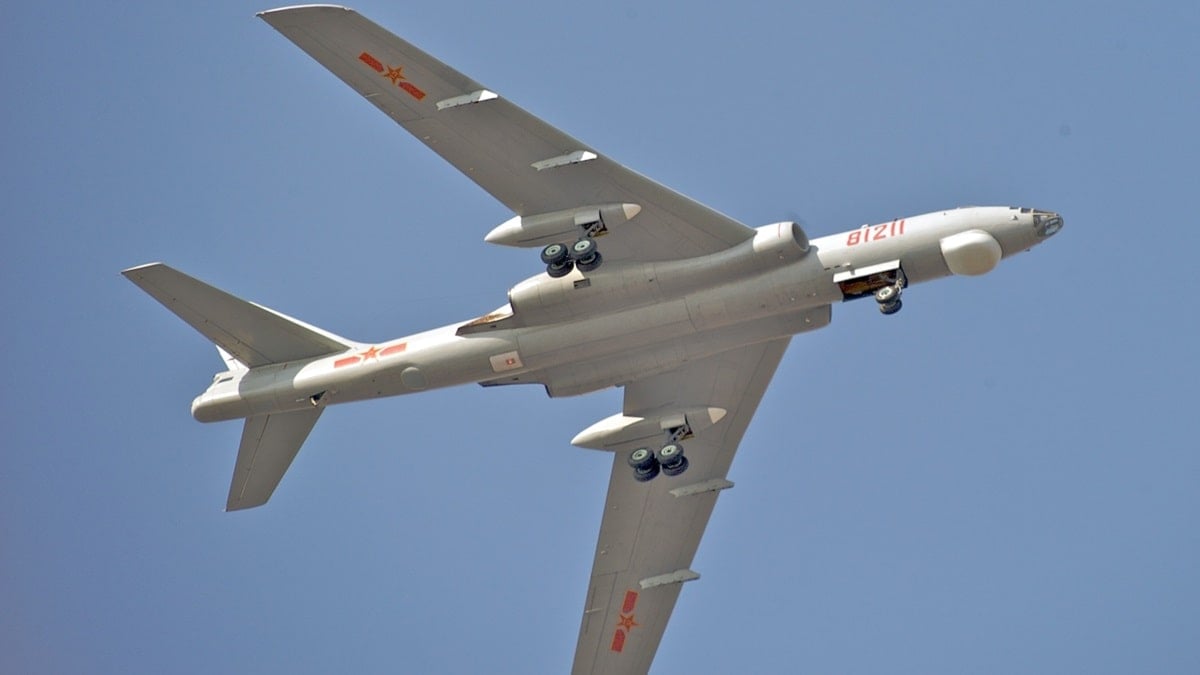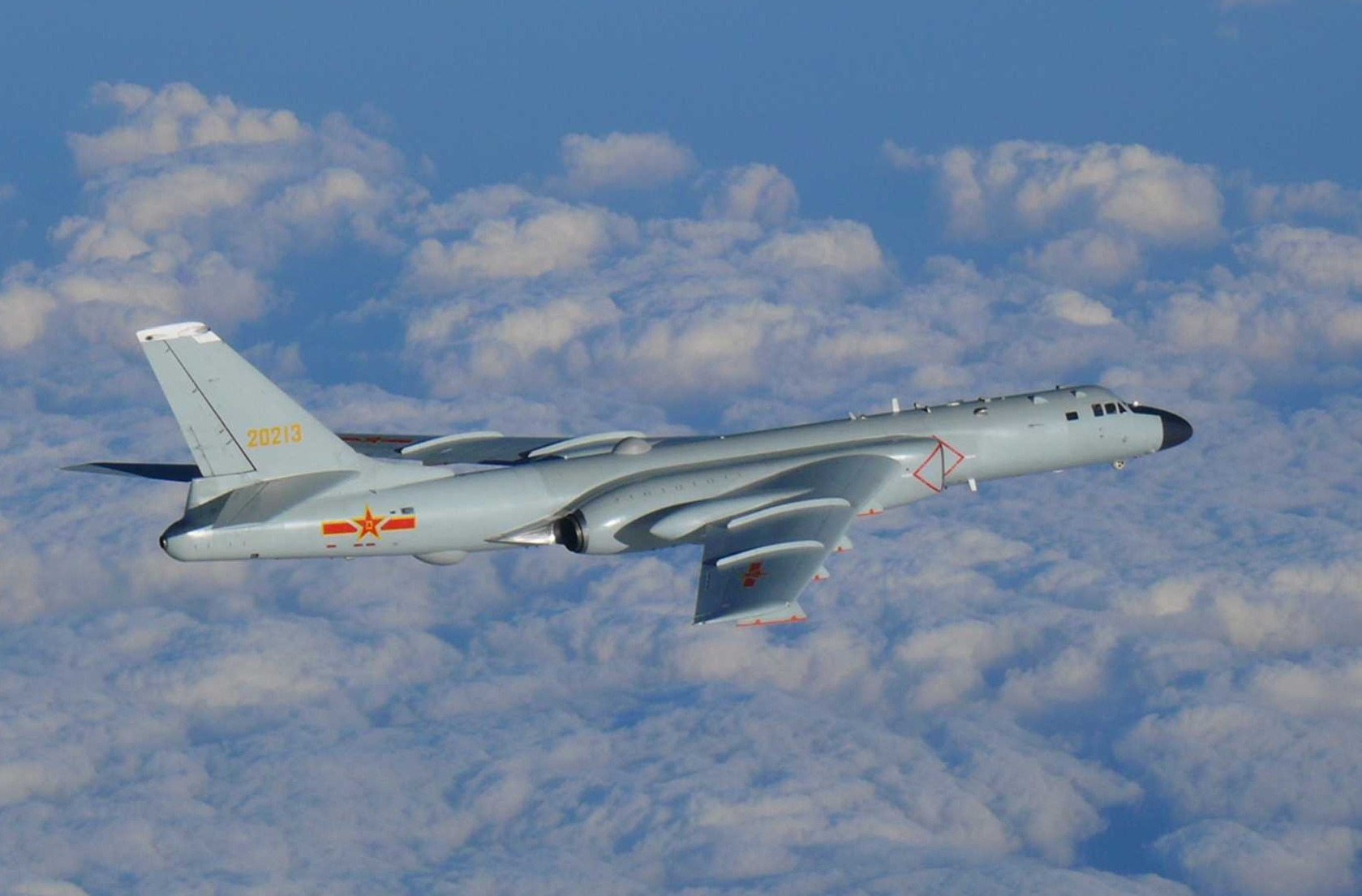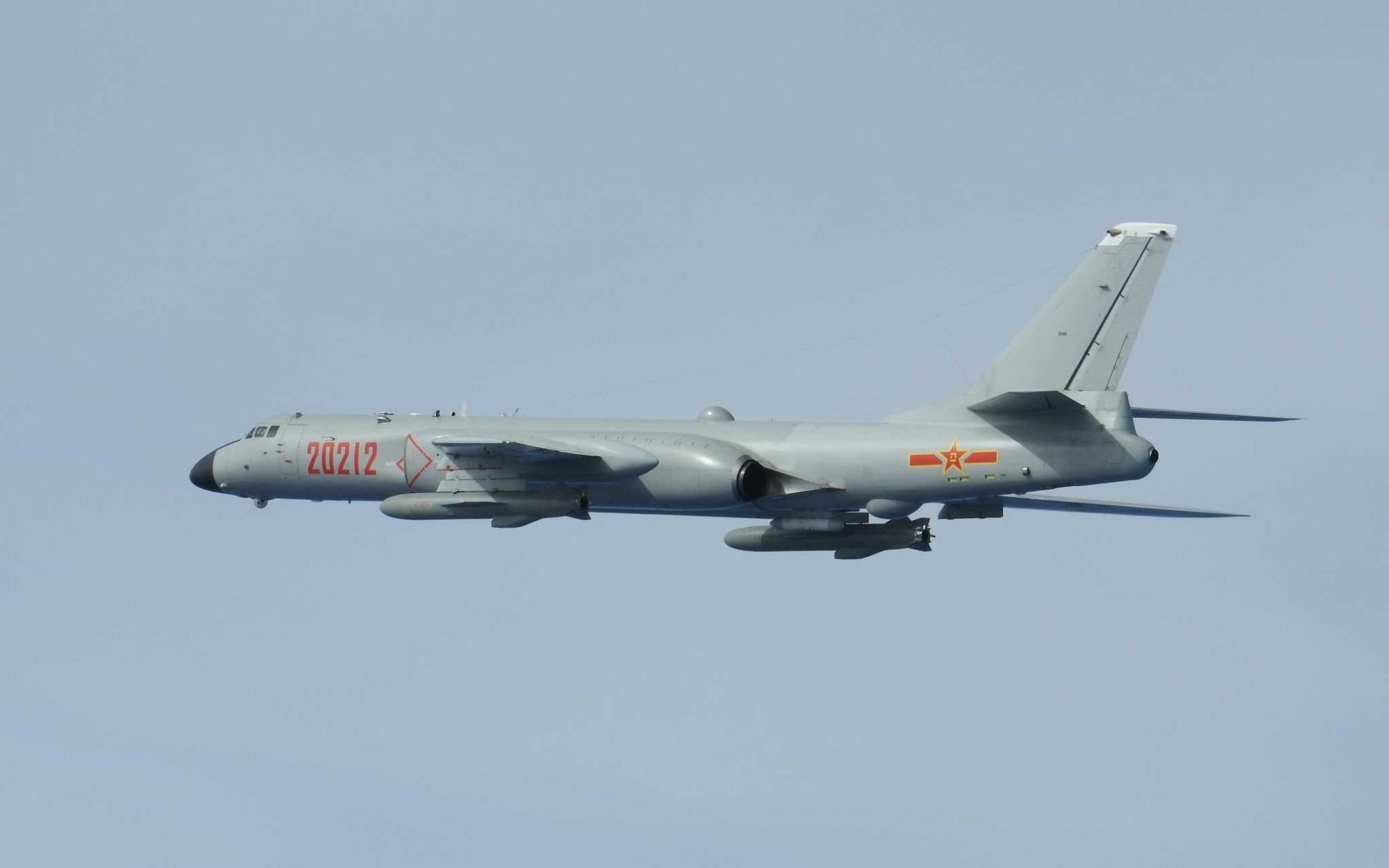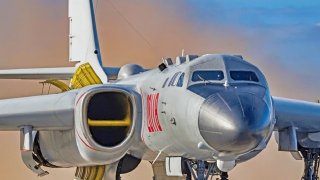China's H-6 Bomber Was Built to Drop Nuclear Weapons on 'Target'
Last week, NORAD intercepted four foreign aircraft—two Russian TU-95 Bears and two Chinese H-6 bombers—near the Alaskan border, marking the first joint operation between Russian and Chinese aircraft in the Alaskan Air Defense Identification Zone (ADIZ).
Summary and Key Points: Last week, NORAD intercepted four foreign aircraft—two Russian TU-95 Bears and two Chinese H-6 bombers—near the Alaskan border, marking the first joint operation between Russian and Chinese aircraft in the Alaskan Air Defense Identification Zone (ADIZ).

-The bombers, which did not enter U.S. airspace, were part of a "joint strategic aerial patrol" over the Bering Sea, according to China's Defense Ministry.
-The H-6, a Chinese version of the Soviet Tu-16 Badger, has been updated with modern weaponry and radar systems, raising U.S. concerns over its potential long-range standoff offensive capabilities.
Here Comes the H-6 Bomber from China
The North American Aerospace Defense Command this week intercepted four foreign aircraft – two Russian and two Chinese – flying near the Alaskan border. The incident marks the first time that Russian and Chinese aircraft have been intercepted while operating together.
The bombers never crossed into U.S. airspace, instead remaining in the international airspace of Alaska’s Air Defense Identification Zone (ADIZ). The bombers were “not seen as a threat,” according to NORAD, which dispatched two F-16s, one F-35, and two CF-18s.
“The US and Canada, which together comprise NORAD, intercepted the Russian TU-95 Bear and Chinese H-6 bombers,” CNN reported. The incident marks the first time the H-6 has entered the Alaskan ADIZ.
According to China’s Defense Ministry, the Chinese and Russians participated in a “joint strategic aerial patrol in the relevant airspace of the Bering Sea” as part of the two military’s existing annual cooperation plan.

Zhang Xiaogang, a spokesperson for the Ministry, said the flight was the eighth such cooperation between the two militaries since 2019, conducted for the purpose of “further testing and enhancing the level of cooperation between the two air forces, as well as deepening strategic mutual trust and practical cooperation between the two countries.”
Xiaogang clarified that “this action is not aimed at third parties.”
Let’s take a closer look at the Chinese bomber used in the incident, the H-6.
Considering the H-6
The H-6’s tandem operation with Russian bombers this week was appropriate, given the H-6 was originally developed in the Soviet Union. The Chinese H-6 is a license-built version of the Soviets’ Tupolev Tu-16 “Badger.” The Badger debuted in 1952, meaning the H-6’s origins stretch back across seven decades. The aircraft has proven to be fairly reliable, with 231 units remaining in service with the People’s Liberation Army Air Force.
State-owned Xi’an Aircraft Industrial Corporation built the H-6 with the help of Soviet engineers.
U.S. intelligence first detected the H-6 in 1971, when CIA satellites observed it on training runs. While the H-6 was developed to drop nuclear weapons (and did in fact conduct nine nuclear tests), the aircraft shifted to a more conventional role after nuclear missiles were developed that could be launched reliably from land or from a submarine.

Regardless, the U.S. is sure to take note whenever a bomber with a history of deploying nuclear weapons operates within the Alaskan ADIZ.
To keep the H-6 relevant through the 21st century, numerous upgrades have been implemented, with updated weaponry and radar systems. According to U.S. intelligence, the most recent version of the H-6 is the N variant, which is capable of aerial refueling and of carrying air-launched cruise missiles. The Pentagon is concerned that the H-6N can provide the Chinese with a long-range standoff offensive air capability.
Like the B-52 Stratofortress and the Tu-95 Bear, the H-6 is a Cold War relic that is still reliable enough to warrant continued service.
About the Author: Harrison Kass
Harrison Kass is a defense and national security writer with over 1,000 total pieces on issues involving global affairs. An attorney, pilot, guitarist, and minor pro hockey player, Harrison joined the US Air Force as a Pilot Trainee but was medically discharged. Harrison holds a BA from Lake Forest College, a JD from the University of Oregon, and an MA from New York University. Harrison listens to Dokken.
All images are Creative Commons.


